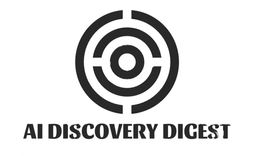Welcome to the cutting-edge world where literature meets artificial intelligence! Imagine a realm where algorithms dissect the nuances of prose, unraveling hidden meanings and offering fresh insights into beloved literary works. In this digital age, AI is revolutionizing how we critique and review literature, opening new doors to a realm of in-depth analysis that was once reserved for human scholars. Join us as we delve into the exciting frontier of leveraging AI for literary criticism and reviews.
The Benefits of Using AI for Literary Criticism
AI offers a plethora of benefits for literary criticism that were once unimaginable. With the ability to analyze vast amounts of text in seconds, AI can provide insights and patterns that human critics may overlook. It can detect themes, motifs, and even sentiment analysis with remarkable accuracy.
By leveraging AI tools for literary analysis, critics can save time and focus on deeper interpretation rather than spending hours on manual data collection. This technology opens up new possibilities for exploring diverse perspectives within texts and across different genres.
AI offers a more objective evaluation of literary works by reducing bias and subjectivity in reviews. Its data-driven approach allows for a more balanced assessment based on concrete evidence rather than personal preferences or preconceptions.
The benefits of using AI for literary criticism extend beyond efficiency to encompass enhanced objectivity and broader analytical scope in evaluating literature.
Examples of AI Tools for Literary Analysis and Reviews
When it comes to literary analysis and reviews, AI tools are revolutionizing the way we approach literature. One such tool is IBM Watson, which uses natural language processing to analyze texts and provide insights on themes, writing style, and more. Another noteworthy example is WriteLab, an AI platform that offers feedback on writing mechanics and structure.
OpenAI’s GPT-3 has gained attention for its ability to generate coherent essays and analyses based on prompts given by users. These AI tools not only save time but also offer unique perspectives that can enhance traditional literary criticism.
Еools like Scholarcy help researchers summarize academic papers efficiently by extracting key points. This technology can be valuable for scholars conducting in-depth literary research or compiling literature reviews.
Еhe rise of AI tools in literary analysis signals a new era of exploration and understanding in the world of literature.
The Potential Impact on the Publishing Industry
AI technology is revolutionizing the publishing industry in ways we never imagined. From analyzing market trends to predicting reader preferences, AI is reshaping how books are published and promoted. Publishers can now utilize algorithms to identify potential bestsellers and tailor their marketing strategies accordingly.
AI tools help streamline the editing process by providing valuable insights into plot structures, character development, and language usage. This not only saves time but also enhances the overall quality of literary works before they hit the shelves. Additionally, automated content generation systems are being used to create personalized recommendations for readers based on their preferences and reading habits.
With AI driving efficiency and innovation in publishing, traditional methods are evolving to meet the demands of a tech-savvy audience. As we embrace this new era of intelligent technologies in literature, the future of the publishing industry looks brighter than ever before.
The Role of Human Critics in the Age of AI
As AI continues to revolutionize literary criticism and reviews, the role of human critics is evolving. While AI tools can analyze vast amounts of data quickly, human critics bring a depth of emotional intelligence and nuanced understanding that machines cannot replicate. Human critics offer subjective interpretations, cultural context, and personal insights that enrich the analysis provided by AI algorithms.
In the age of AI, human critics are not obsolete but rather complementary to artificial intelligence. They provide a unique perspective that adds value to the overall assessment of literary works. Human critics can contextualize a piece within its historical significance or offer critical reflections based on their own lived experiences.
The collaboration between human critics and AI technology has the potential to enhance literary criticism by offering a holistic approach that combines analytical rigor with creative interpretation. This synergy allows for a more comprehensive evaluation of literature that caters to both intellectual analysis and emotional resonance.
Conclusion
As AI continues to make strides in the literary world, we can expect a myriad of benefits for both readers and authors. With the ability to analyze texts on a large scale, provide valuable insights, and enhance the reviewing process, AI is revolutionizing how we approach literature.
While AI tools offer efficiency and objectivity in analyzing texts, human critics still play a crucial role in providing nuanced perspectives and interpretations that machines may not grasp. The synergy between AI technology and human expertise has the potential to elevate literary criticism to new heights.
In this age of technological advancement, embracing AI for in-depth literary criticism and reviews can lead to a richer understanding of literature while also opening up new possibilities for creativity and exploration. As we navigate this evolving landscape, it’s clear that leveraging AI alongside human insight will shape the future of literary analysis and appreciation.


